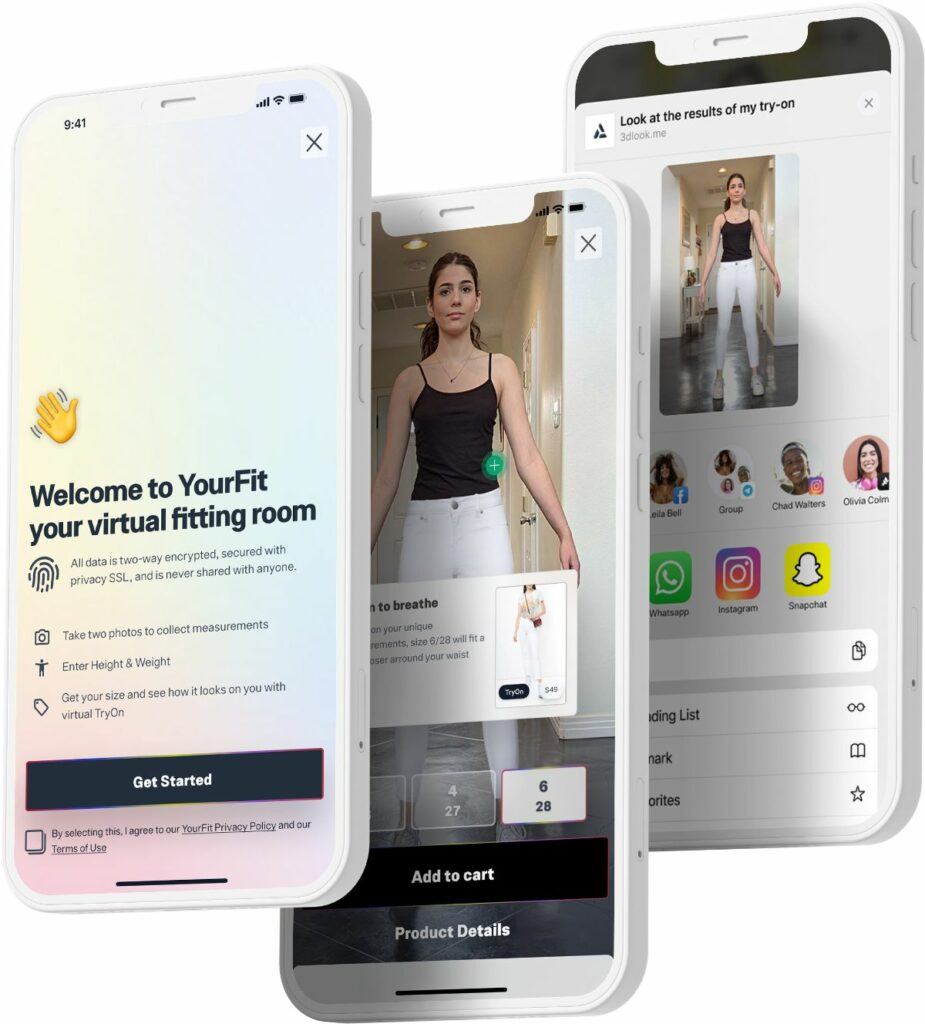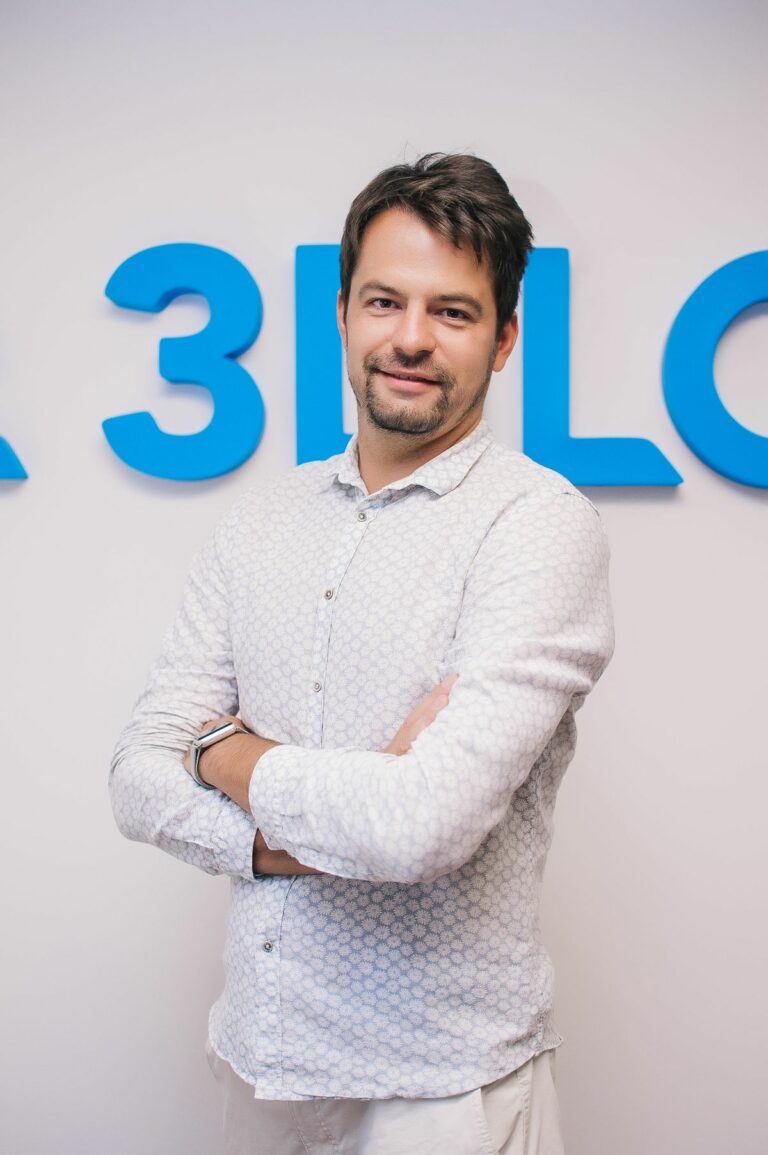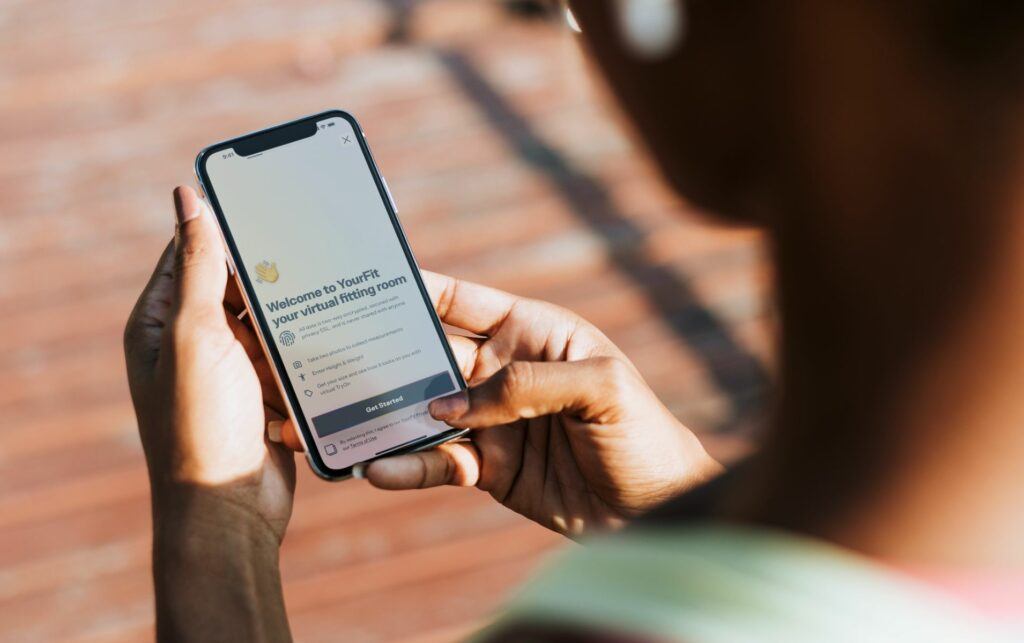Pivoting a sustainable fashion retail future with 3DLOOK
A.I.-powered mobile body scanning technology solves the complexity and uncertainty
of
fit & sizing problems.

A digital revolution has entered society. The fashion industry is seeing rapid transformations–changed rules, personal relations, business, communication–through digital innovation as big and small companies enter the space.
As innovations flood the market, retail is one of the fashion sectors undergoing a disruption. Shopping for clothes is starting to look very different as online retail becomes a reality. And this is only the beginning while it continues to grow and evolve.
However, the accelerated adoption of e-commerce brought massive return rates, creating a serious sustainability problem because of the lack of proper fit and sizing technology.
Enter 3DLOOK, and gone are the woes of online shopping and no more guessing.
3DLOOK, the global leader in AI-first mobile body scanning solutions, is transforming fashion retail by improving sizing, increasing personalization and reducing product returns and textile waste with their ultimate virtual fitting room experience built for total retail.
YourFit, the company’s flagship solution, is the first and only tool that virtually replicates the entire in-store fitting room experience for the convenience of buying clothes offline.
Their mobile body scanning technology powers the fit personalization platform that provides every customer with a precise fit and size recommendation combined with an engaging try-on experience tailored to their unique body shape and appearance.
In a conversation with Vadim Rogovskiy, Co-Founder and CEO, 3DLOOK, we explore the success of how 3DLOOK in leading the transformation of fashion retail with sustainable business models while they conquer digitized fashion.
What is the technology behind 3DLOOK, and how does it work?
So what is the technology behind 3DLOOK, and how does it work? The mobile body scanning technology uses a proprietary combination of computer vision, machine learning, and 3D statistical modelling that is accurate and convenient enough for people to use without friction and effort.
Completely browser-based widget for consumers to take pictures, there is no need to download a separate app, unlike other solutions.
The customer is voice-guided through the quick capture process for two photos, a front and a side view, to obtain landmarks on the user’s body to generate a unique 3D avatar.
The technology’s efficiency and accuracy take into account more than 100 data points of measurement of the human body from just two photos in about 30 seconds, after which the images are deleted.
Talking about the benefits, Rogovskiy explained that customer experience is a vital part of what they offer to make them more confident in digital shopping while also helping brands increase conversions, decrease returns, and operate more sustainably.
“Why there’s such huge return rates in eCommerce?”
At the heart of all, it is the massive return rates in e-commerce currently widespread in the fashion industry that 3DLOOK addresses.


At the heart of all, it is the massive return rates in e-commerce currently widespread in the fashion industry that 3DLOOK addresses. “Why there’s such huge return rates in eCommerce?” asks Rogovskiy. He explained that brands don’t understand how their consumers look, pointing out the lack of considering body shape distribution in different audiences, jobs, and geographic locations while manufacturing.
Brands use standard size charts that are just generic– they don’t represent not only the actual garment they also don’t represent the bodies of the actual consumers, says Rogovskiy. “There is a huge breakdown between [actual] consumers and the brands causing great return rates at a dire 40 percent on average and up to 60 to 80 percent for some. With our solution, we already see the impact we make on return rates after working for just a couple of months by up to 4-6 percent reduction,” he shared.
“There is a huge breakdown between [actual] consumers and the brands causing great return rates at a dire 40 percent on average and up to 60 to 80 percent for some. With our solution, we already see the impact we make on return rates after working for just a couple of months by up to 4-6 percent reduction,” he shared.
Bringing many advantages, such as increasing online sales and reducing returns, virtual fitting rooms have long been considered a solution and standard for digital retail success. However, it didn’t become mainstream until very recently, although many remain skeptical towards the tool because of challenges such as technology complexities, high cost of implementation, subjective nature of fit and accurate characterization of clothes.
According to Rogovskiy, many have experimented with virtual fitting software for the last 20 years, but it was ineffective and barely working. So when 3DLOOK started
there was some brand perception that virtual fitting rooms don’t work because of their previous experience trying it out and finding out that it just wasn’t there yet, he said.
“We fought with previous biases of these brands and retailers because we are not just some kind of a part of a broader fit solution. Mobile body scanning is a separate category; it brings some particular values that other categories of solutions don’t,” pointed out Rogovskiy. 3DLOOK is the first and only company that answers two vital questions for the consumer in the same user experience, which is, what’s my size? And how will it look on me?–making them the leader in taking the concept of the virtual fitting room to the next level.

“Different people have a different opinion about what is Metaverse, and it is just a buzzword for now. There are lots of different virtual worlds that people call Metaverses when in fact, Metaverse could be just one. When all these worlds are interconnected, and you have the same identity, data points, and profile is same across all these worlds; then it can be called Metaverse.” His advice to brands is that it is better to observe and see what happens since it is still in its early stage and years away from its actual adoption. He opines that Metaverse is currently just marketing hype with people jumping in without even understanding what to do with it. In extension, the digital clothes that are seeing a sudden rise alongside the Metaverse, Rogovskiy thinks that is where they will be able to find their place. As far as the adoption of virtual fashion in the real world, or even just dressing to impress on social media, is something he doesn’t believe will happen soon. Even ten years from now, 80 percent of the money spent on apparel will still be on actual clothing.
So what will the future of fashion be from a broader perspective?
“More creativity, more opportunities for creative people, sustainable consumption, and reduction of pollution” are some of the significant benefits of digital technology, mentioned Rogovskiy.“While the future of fashion will be super personalization and hyperconnectivity. Our virtual and real-world identities will be connected–the data collected in the real world will be used online, while companies will use our behaviour in Metaverse to provide more personalized services offline. So that kind of interconnected consumer profile is what I see in the future.” Vadim Rogovskiy, Co-Founder and CEO, 3DLOOK.












